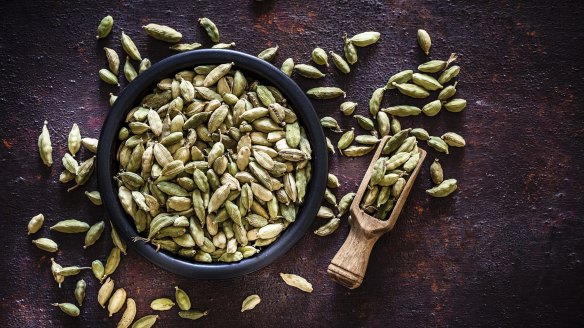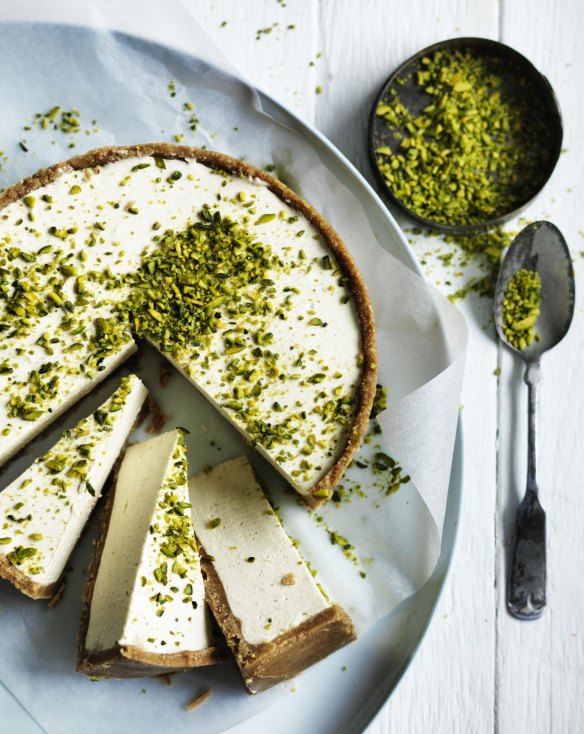Cardamom: Everything you need to know

What is it?

Cardamom, the Queen of Spices, is the third most expensive after saffron and vanilla. A native to India and Sri Lanka, the tropical plant Elettaria cardamomum produces a small seed pod, no bigger than two peas side by side. Inside are up to a dozen seeds, no bigger than a match head, but packed with an astonishing combination of aromatic essential oils and compounds.
This is green cardamom, and the most used, and referred to simply as cardamom. Its cousin Amomum subulatum produces a black seed pod, or black cardamom, with a smoky, savoury aroma.
Why do we love it?
It is one of the most complex aromatic spices in a chef's armoury. It contains fragrant compounds that smell like clove, Mediterranean pine, citrus, geranium and rose and earthy scents like crushed limestone and clay.
While its aroma implies sweetness, it is a spice that can meld with others to form a chorus of different but harmonic notes in dishes as diverse as Masala chai to Persian love cake to a duck terrine. A little goes a long way – which helps to alleviate the high price tag.
Who uses it?
"In the days before refrigeration, we would fill a clay pot with water, add a few cardamom pods and keep the fragrant drinking water cool on wet sand in the shade," says Kumar Mahadevan, founder of Abhi's Indian Restaurant in Sydney's North Strathfield. He grew up in Chennai, India, where cardamom is still used every day in religious ceremonies, medicinal practices, and the kitchen. He remembers his grandmother's payasam, sweet rice pudding redolent of cardamom.
"Cardamom is essential in making a great goat korma, for which I would use black cardamom, cassia bark, peppercorns and fennel seeds. In a chicken korma, I would use the more aromatic and sweet-smelling green cardamom."
He says cardamom has a particular affinity with pistachio nuts, alongside rosewater, in the famous frozen dessert called kulfi.
"There is something that happens to cardamom when you use it with sugar," says Melbourne baker Phillippa Grogan from Phillippa's. "It takes on a very high citrus aroma, almost lemony scent." Several years ago, she spent months wandering Sweden and exploring its baking culture. The nation uses 18 times more cardamom than the global average.
Phillippa's Swedish bun uses cardamom three ways. Powdered cardamom is blended with yeast dough, spread with a sweet buttery filling with cassia, formed into a woven bun, baked, and finished with cardamom sugar. Perfect with black coffee.
How do you use it?
While you can buy ground cardamom, chefs recommend using whole pods, removing the seeds, and milling the seeds in a coffee blender to add to cakes, biscuits, and doughs.
Whole pods can be toasted, lightly crushed, and added to slow-cooked meat dishes such as beef or chicken rendang.
Black cardamom is generally only used in meat dishes. The skin or hull contains aromatic oils, so do not discard them. These can be toasted and milled in a spice blender to make a powder for Indian and Sri Lankan dishes.
Add crushed cardamom to Arabic coffee or qahwah.
- Adam Liaw's honey and cardamom cheesecake (pictured)
Where do you get it?
Buy small amounts of fresh whole pods from spice specialists such as gewurzhaus.com.au, herbies.com.au, spiceandco.com.au and Middle Eastern and Indian stores.
After more than 10 years of answering readers' vexing culinary questions, Richard Cornish has turned his focus to ingredients. Send ingredient suggestions to brainfood@richardcornish.com.au or via Twitter and Instagram @Foodcornish.
Appears in these collections
- More:
- Food
- Brain food
From our partners
Original URL: https://www.watoday.com.au/goodfood/cardamom-everything-you-need-to-know-20210615-h1wim5.html
